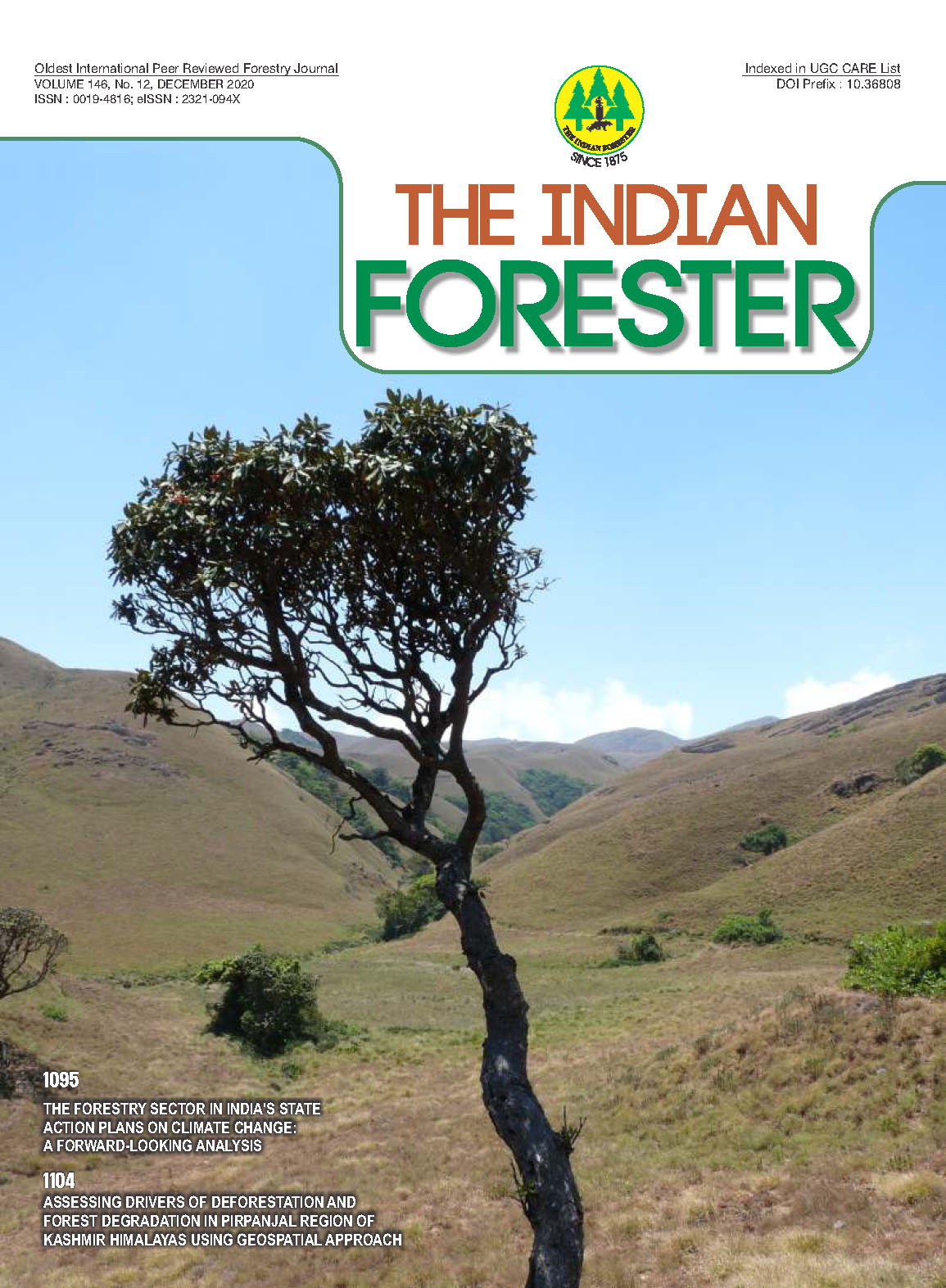Standardization of Seed Germination in Fever Nut (Guilandina bonduc L.) for Adaptation in Western Himalayas as its New Abode
DOI:
https://doi.org/10.36808/if/2020/v146i12/156776Keywords:
Dormancy, Fever Nut, Germination, Guilandina bonduc, Seed Pre-Treatment.Abstract
Fever nut (Guilandina bonduc L.) a fast growing important medicinal plant of Fabeaceae family is widely distributed throughout the plains near seacoasts and other Southern regions of India. However, information is not available regarding its adaptation in Western Himalayas, which is known for its wealth of medicinal herbs. The study indicates that the plant is amenable to successful adaptation in Western Himalayas. Further, due to uncontrolled exploitation for traditional medicines from nature, the plant has become endangered. The simple and effective method for its large scale propagation through seed germination are reported in the study. The method involves pre-treatment of seeds with concentrated sulphuric acid for 90 min in fresh or one year stored seeds. The results of the present study may be useful in large scale propagation of the plant in its new abode in Western Himalayas for further utilization in different types of herbal medicines and other purposes.References
Cheruvathur M.K., Britto J. and Thomas T.D. (2012). Pulvinus: an ideal explant for plant regeneration in Caesalpinia bonduc (L.) Roxb., an important ethnomedicinal woody Climber. Acta Physiol. Plant., 34: 693-699
Devi V.G., John A. and Selvarajan S. (2016). Physicochemical standardisation and an overview on Caesalpinia bonduc Linn., a widely used indian traditional drug. Euro. J. Pharma. Med. Res., 3: 427-434.
Kelly K.M. and Staden J.V. (1985). Effect of acid scarification on seed coat structure, germination and seedling vigor of Aspalathus linearis. J. Plant Physiol., 121: 37-45.
Kumar S.R. Santosh., Krishna V., Venkatesh Pradeepa K., Kumar K Girish. and Gnanesh A.U. (2012). Direct and indirect method of plant regeneration from root explants of Caesalpinia bonduc (L.) Roxb. - A threatened medicinal plant of Western Ghats. Ind. J. Exp. Biol., 50: 910-917.
Patade V.Y., Bhargava, S. and Suprasanna P. (2009). Halopriming imparts tolerance to salt and PEG induced drought stress in sugarcane. Agri. Ecosys. Environ., 134: 24-28.
Patade V.Y., Kumar K., Gupta A.K., Grover A., Negi P.S. and Dwivedi S.K. (2019). Augmentation in seed germination through pre-treatments in Himalayan Yellow Raspberry (Rubus ellipticus Sm.): An important wild edible ethnomedicinal shrub of Himalaya. Indian Forester, 145: 339-342.
Singh V. and Raghav P.K. (2012). Review on pharmacological properties of Caesalpinia bonduc L. Int. J. Med. Arom. Plants, 2: 514-530.
Downloads
Downloads
Published
How to Cite
Issue
Section
License
Unless otherwise stated, copyright or similar rights in all materials presented on the site, including graphical images, are owned by Indian Forester.





